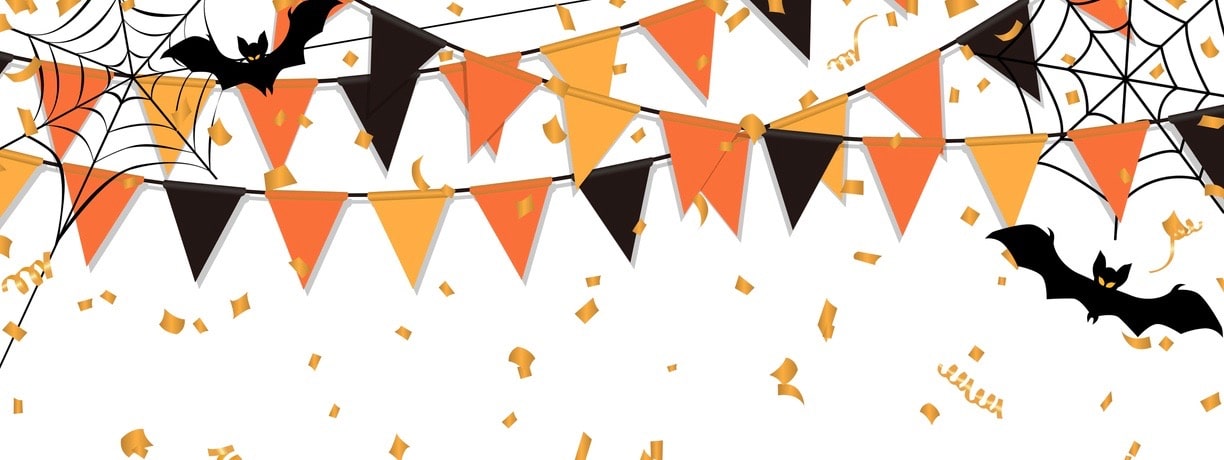Right now, 172 million Americans are knee-deep in the process of installing seasonal home decor elements, dreaming up character costumes and clever horror costumes, and buying party-sized candy mixes (it’s literally being sold by the three- and four-pound bags at big-box retailers). It’s Halloween people. And that means it’s time for The Shelf’s annual infographic of Halloween statistics, trends, insights, and strategies (you know us).
So, we know you already have this massive infographic (below), but before you dig in on your own, I think it’s cool for me to kind of highlight some of the more interesting (read, valuable) Halloween stats contained herein.
Halloween numbers are up… and down
Halloween numbers are doing an interesting dance right now. The number of Americans who say they will celebrate Halloween this year is three million less than it was last year this time. Don’t be alarmed. I don’t think Halloween is going anywhere. There are actually a couple of trends contributing to the drop including fewer school-aged kids and fewer families planning to go trick-or-treating.
Holding steady… Candy is still the most popular thing to buy for Halloween with 95 percent of celebrants picking some up for the big day.
Up this year… More people are decorating for Halloween. This year, 72 percent of celebrants are picking up stuff for the house. Another category that’s showing significant growth is haunted attractions… which are NEVER included in the general stats for Halloween. You always have to seek them out. But this year, haunted attractions are neck-and-neck with greeting cards in sales, and the percentage of celebrants visiting haunted houses jumped from 18 percent to 22 percent this year. That percentage nearly doubles (to 40 percent) among the 18- to 24-year-olds.
Down this year… Fewer people are planning to spend money on costumes, and greeting cards. The costumes stat goes hand-in-hand with the decrease in the percentage of Halloween celebrants planning to go trick-or-treating.
People are all about doing stuff for Halloween
If you’re wondering about this Halloween experiences business, just take a 10-minute drive along your local interstate highway and see how many haunted farms, fields, escape rooms, fashion shows, and midnight-whatevers you see advertised.
Seriously, remember back in the day when you considered trick-or-treating the real deal at Halloween time? Well, social media has changed how we rank the value of our personal experiences. They have to be interesting enough, trendy enough, visually appealing enough to be chronicled on Instagram. This is especially true of Gen Zers.
There are some legit differences in how the 18 to 24 crowd does Halloween
One of the most interesting sets of data we pulled for this infographic demonstrates the differences in how Gen Zers between the ages of 18 and 24 celebrate Halloween compared to the general population.
Gen Z adults are significantly less likely to stay home and pass out candy than the average Halloween celebrant (56 percent of Gen Zers will do it versus 66 percent of Halloweeners overall). But they’re waaaaay more likely to dress up in costumes (73 percent versus 47 percent). Of course, they’re more likely to visit a haunted house (40 percent versus 22 percent), and to attend or throw a party (53 percent versus 32 percent).
It’s very clear that for brands and marketers targeting traditional Halloweeners, leveraging Pinterest and Facebook to reach that older demographic would be in your best interest. By comparison, Instagram, Snapchat, and TikTok are the best platforms for “experience” brands – especially if you’re offering a haunted attraction this year – and retailers to reach that young Halloween party crowd.




